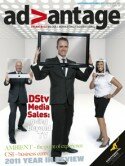Global brand development and insight consultancy, Added Value, has launched its brand positioning and mobilisation model in South Africa, BrandSum.
Designed to help marketers build strong, lasting brands, BrandSum combines the best of traditional positioning theory with the latest thinking in brand character creation and strategy mobilisation.
The approach enables Added Value to clarify what is required to endow brands with the distinct personality and magnetic identity they need to be truly desirable. The approach also allows marketers to identify what will keep that desire fresh to mobilise their brands into the future.
“Positioning is the source of a brand’s growth and competitive advantage. We all appreciate that great brands are more than the sum of their parts. They target the few and sell to the many. They serve an important and enduring need for consumers. They have a distinct personality and a recognisable identity.
“However, over time, brand desire fades if it is not regularly refreshed.
“Traditional brand positioning models take into account things like consumer and category insights to identify potential positioning territories. They look at the functional and emotional benefits of a product to help define how it differs from its competitors. And they offer a direction on how to express the brand.
“But they omit two key mobilising elements; a robust characterisation of the personality of the brand and the use of cultural insight to keep that personality fresh and relevant over time. BrandSum is what we use to pull all of this thinking together into one collective approach.”
Brand positioning tools have been used by marketers for many years; what is distinctive about Added Value’s BrandSum is:
· its ability to ‘mine’ culture to refine positioning and expression
· its insistence that character creation be at the heart of the positioning strategy.
Finally, it mobilises the brand by identifying fresh cultural expressions of the brand’s defining benefits and character traits.
“BrandSum provides marketers with a dramatically better expression of their brand strategy, which will in turn inspire a more consistent and effective execution of that strategy across all touch points,” said McGowan.
Keith Stevens, Managing Director of Added Value South Africa added, “BrandSum is the culmination of years of experience in working with brands across the world. The beauty of the approach is that it’s designed to either stand alone or be used in part to clarify and compliment clients’ existing positioning work. It’s an intuitively simple way to sum up a complex process so that clients have the clarity to get on with the job of building great brands.”
About Cultural Insight:
“Great brands are constantly evolving. They anticipate change. And the strongest indicator of change is culture. We use cultural insight to understand how the world is changing and pull out the patterns of change that are going to be important for a brand in the future,” said McGowan.
“BrandSum is unique in that it adds cultural insight to the typical mix of consumer and category insight. This provides the cultural context in which the brand operates, and importantly, how this context is changing and what that means for a brand to remain fresh and relevant.”
In reality, this means it looks at the evolving codes of culture – from design, fashion and film to emerging technologies, products and businesses – to understand how a category or market is changing.
It helps marketers understand what meanings are at play in their categories, who owns what and whether this differs from market to market (BrandSum: cultural landscape).
It interrogates the cultural trends at play, decodes how category benefits are expressed, brings emergent meanings to life, and helps clients encode the most emergent expressions into their positioning and execution (BrandSum: cultural springboard).
“Imagine your market is all about ‘indulgence’, ‘speed’ or even ‘happiness’. Imagine you’ve identified ‘masculinity’ or ‘efficacy’ as the important cues in your category. Cultural insight takes these ideas, first unpacks them and then brings to life how they can be expressed and owned in the future.
Whether you are looking to create a new brand, reposition an old one or just find the latest expression of a heritage positioning, cultural insight can take a concept, bring its many facets to life, and provide the inspiration to evolve in the most future focussed direction.”
About CharacterLab™ and Character Creation:
According to McGowan, when it comes to understanding and expressing brand character, most positioning models try to define character based on 3-4 unmistakeable ‘personality’ words – friendly, cuddly, cute, for example.
“But brand character can’t be captured (or measured) in 3-4 words.
“For example: who do you think of when you hear the words ‘A feisty, confident and fiercely independent career woman’? Madonna, or Margaret Thatcher? Those words apply to them both.
“Madonna, however, is also a controversial, shocking, sexually empowered / empowering and spiritual character. Margaret, on the other hand is steely, ruthless, decisive, unchanging and unyielding.
“And both have a tone of voice, a style, a distinctive personality. True brand character needs more definition and clarity to help strategy make the jump consistently and successfully into execution.”
So how can marketers embed more character into their brand positioning?
McGowan explained, “As a first step, archetype thinking can simplify the character challenge and help brands perform better by providing depth and vividness of character. Current positioning models are not equipped to either test the success of brand positioning or measure how effective a brand’s touch points are in delivering its character.
“So, we developed CharacterLab™1, an on-line tool that can define potential archetype-based characters as well as measure the nature and intensity of the archetypes on which a brand’s character is based.”
The tool uses a blended archetype model and is derived from the work of 19th century psychiatrist Carl Jung. It employs 12 distinct and culturally consistent personality types as a base. When each primary archetype is combined with another in varying degrees of intensity, a range of clear potential character development areas are exposed for brands.
For example, where primary archetype models offer the ‘hero’ as a potential positioning character, CharacterLab™’s secondary archetype layer adds depth, seeing a distinct difference between a Hero Regular Guy (e.g. Levis) or a Hero Outlaw (e.g. Virgin) or a Hero Creator (e.g. Apple).
Using CharacterLab™, which has its origins in Added Value’s award winning Archetype Game, marketers can understand what their – and their competition’s – archetypes are, and if they’re consistent. Marketers can quantify how strong their brand’s primary and secondary archetypes are, how distinct the archetypes are from the competition, and how desirable these archetypes are to the key consumer. Importantly, marketers can also then test new creative work (or work in process) to determine whether it is on archetype or not.
It also enables them to assess alternative archetype directions to refine positioning or explore new options.
Once the primary and secondary archetype is pinned down, the next step is to develop a full brand characterisation to help define the brand’s personality – the ‘Character’ block in the BrandSum model.
“The combination of rich character development inspiration with the rigour of measurement metrics helps clients make hard decisions around brand strategy and execution.
“Being able to define your brand’s character, measure its intensity and then test future communications against that character profile in this way is a powerful proposition,” concluded McGowan.
In South Africa, where many consumers have limited or no online access, the board game version of CharacterLab still gives clients access to the archetype definition and creative testing aspects of the tool. Additionally, advances in handheld technology allows fieldworkers to capture data from respondents if required.










No comments yet.